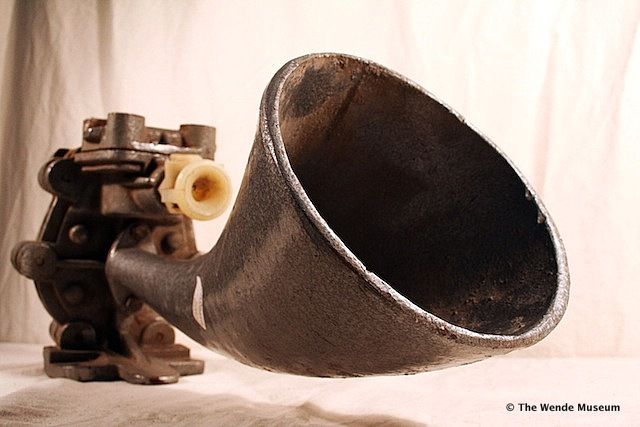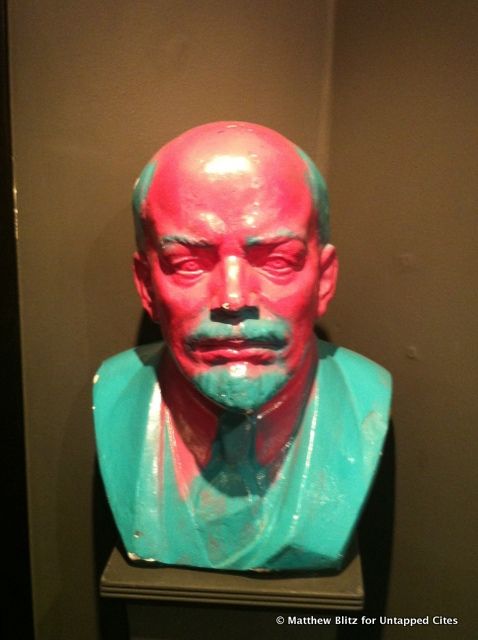Last Chance to Catch NYC's Holiday Notalgia Train
We met the voices of the NYC subway on our nostalgia ride this weekend!



On June 12th, 1987, only steps away from where the Berlin Wall stood, President Ronald Reagan declared that Soviet Union leader Mikhali Gorbachev needed to do something about the division and oppression that had enveloped Eastern Europe. President Reagan demanded, in front of nearly 45,000 Western Berliners, that “Mr. Gorbachev, tear down this wall!”
About two and half years later, the wall did come tumbling down. On November 9th, 1989, border crossings were open, East and West Germany were unified, and the Berlin Wall became a symbol of a tortured past.
Over the next weeks, months, years, former citizens of East Germany did their best to rid themselves of the memories of oppression. Flags, paintings, symbols, propaganda, tapestries… anything that had the omnipresent sickle and hammer on it was thrown away and discarded. But as it’s always been the case throughout history, one man’s forgettable trash is another man’s treasure.
The Wende Museum (“Wende” is the German word for “turning point”) in Culver City, California has amassed its tremendous collection of Cold War-era artifacts based on this philosophy. Located in a tucked away business center on the outskirts of Culver City, this would seem like an odd place for one of the world’s largest collections of Cold War era items, paraphernalia, artifacts, and archives. But this very distance and disconnect from the physical area and the painful memories this time period brings up allows the museum to have a certain objectivity. A lot of their collection has come from donations, searching through dusty attics, and even, at times, items that have been marked as trash and thrown in a landfill.

Walking through the museum and the basement vault, one can find old sewing machines, telephones, sickle and hammer tapestries, government sanctioned paintings, and numerous Lenin busts. The collection truly gives you a sense of what ordinary life was like behind the Berlin Wall.
The most notable part of the collection is the longest stretch of the original Berlin Wall outside of Germany (other segments of the Wall exist in the US, including at the Newseum in DC and at a public park in New York). Acquired in 2009, the museum has put ten of the segments on display on Wilshire Blvd, so that it would be more accessible for public viewing. An eleventh segment stands outside of the museum.

In addition, the museum houses many different types of Eastern Bloc surveillance equipment. These are fascinating because it provides a unique and rare look into how the Eastern Bloc government used to spy on not only other countries, but their own citizens. The Wende’s collection includes archaic hearing devices, a camera hidden in a pen, fake passports, crude satellites, and examples of surveillance cameras that were commonly used throughout the Communist Bloc.

Another piece that’s not to be missed is the notable “Pink Lenin.” In the days after the fall of the wall, artists and vandals became one and went about making their own political statements. A particular artist/vandal decided to paint, with extreme attention to detail, a bust of Lenin pink. It sits in the Wende today as a literal bright spot in a world full of gloom and darkness.

The museum is quite small and the main gallery can only exhibit approximately one percent of the tremendous collection. But all of that is changing in 2014, when the Wende Museum moves into the old Culver City Armory building, with a 75 year lease in hand, to showcase “the world’s largest Cold War visual archive.”

Matt Blitz is the field agent for Obscura Society LA. The Obscura Society goes on adventures in cities across the world. Their purpose is to encourage people to get out in their community and explore the unknown. If you are interested in joining the Society, sign up for the mailing list!
Subscribe to our newsletter